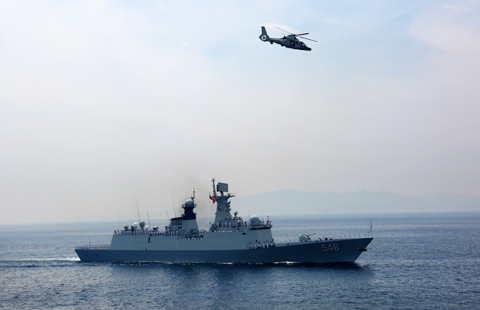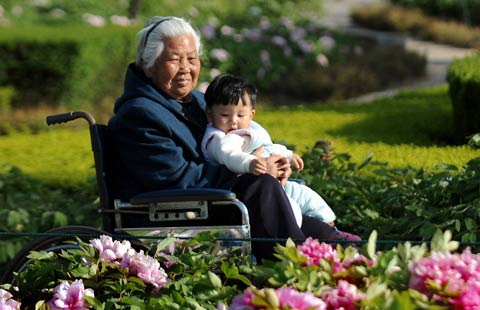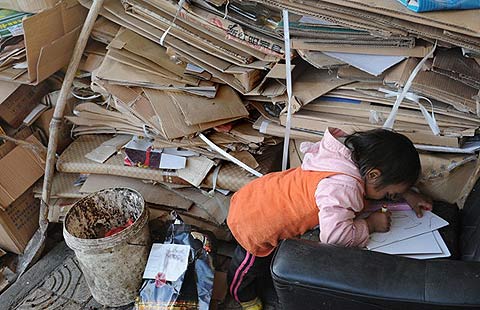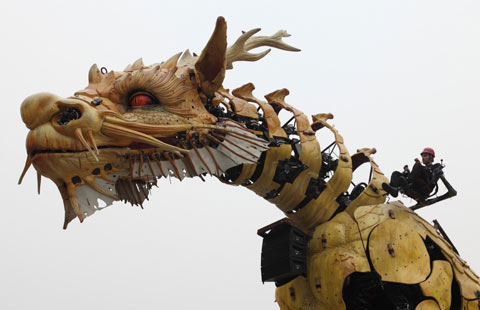The aim is to keep soaring
Updated: 2014-11-21 12:27
By Cecily Liu(China Daily Europe)
|
|||||||||||
British and Chinese put heads together on aviation technology

For many people, failure is something to be avoided at all costs, but Lin Jianguo says that for Imperial and Aviation Industry Cooperation of China an unexpected failure along the way can be a valuable learning experience.
"What's so great about our collaboration with AVIC is that they are allowing us to fail in the process of exploring different new technologies, and they encourage us to be brave in tackling new technologies," says Lin, a professor of mechanics of materials at Imperial College London.
"This is very supportive, although from our perspective we try to control risks and keep failure to a minimum."
Lin says joint research with Western universities is a key path for Chinese companies to develop their technology and become industry leaders.
"In the past Chinese companies used to go abroad to buy a lot of technology from Western companies, but this process is getting harder and harder," says Lin, who heads a research center formed by Imperial and AVIC.
A few decades ago, Chinese companies, especially in the iron and steel and automotive industries, bought a lot of mature and outdated technologies from their Western counterparts.
The big technology gap between Chinese and Western companies meant Western companies would sell old technologies that were valuable to Chinese companies.
"It was quite effective because Chinese companies were able to catch up with Western technology in a much shorter time," Lin says.
The sales were often in the form of joint ventures and technology transfer, but the latest and best technology still stayed in the West, he says.
But as the technology gap between the two closed, the technology that Chinese companies wanted to buy was so valuable to their Western counterparts that they did not want to sell it.
"So working with global universities to develop their own technology is a key to development," Lin says. "Universities like Imperial can attract the best global talent for technology research, and collaboration will help Chinese companies become technology leaders."
AVIC has invested 5 million pounds ($8 million; 6.3 million euros) in two R&D centers at Imperial that opened two years ago.
One is the AVIC Center for Structural Design and Manufacturing, which develops manufacturing and design techniques that will help create safer, lighter and more efficient aircraft.
The second, the AVIC Center for Materials Characterization and Modeling, investigates new materials to build aircraft, including, nano-powder, high strength aluminum and durable transparent materials.
Lin says the results of the research can be used on large cargo aircraft such as those used in disaster relief.
China has very large cargo aircraft, with capacity of as much as 270 tons, but could benefit from more R&D in improving efficiency, economy and reliability, he says.
One technology Lin's team is helping AVIC to include in the design of aircraft is a technique that can reduce the weight of wings, reducing costs and aircraft fatigue, thus extending the life of aircraft.
Lin says Imperial's collaboration with leading aviation companies including Rolls-Royce and Airbus underlines the college's technology expertise.
Imperial's collaboration with AVIC is directed toward the technical capability of Chinese manufacturing, in terms of materials and expertise available, so the technology can eventually be commercialized in a way that will fit in with the Chinese manufacturing supply chain, he says.
"The commercialization process itself will be done by AVIC, as Imperial's research has more to do with fundamental research."
One complication in gaining approval for the joint work was the fact that AVIC operates in an industry involving national security, Lin says. So the project needed regulatory approval from both the UK and Chinese governments.
However, Lin says Imperial has kept the research collaboration to the fundamental stages, where new material processing and manufacturing technologies will be developed and the results can be published in leading international journals. The project eventually won the support of both governments.
Imperial now has six postdoctoral researchers and more than 10 PhD students working on the project. AVIC will also send up to 50 of its researchers to Imperial over the life of the research.
These AVIC employees will work at Imperial as visiting academics, taking part in developing technologies for AVIC, but also developing their research skills and expertise, which they can bring back to the AVIC R&D department, Lin says.
The model of technology advancement through collaboration with university research has long been popular among Western companies, and Chinese companies are slowly catching up on this.
Rolls-Royce has more than 170 R&D centers globally, located mainly in the UK, the US and Germany. It now has two R&D centers in the mechanical engineering department of Imperial.
"It is a good idea to have R&D centers in partnership with universities across the world, because all universities have their own specializations," Lin says. "That strategy allows a company to be a global technology leader for the long term."
Lin says companies have traditionally focused more on R&D in their own R&D centers, but with this model there is a risk that R&D will not receive proper attention because companies often have many production targets to meet, and long-term R&D is often given lower priority.
R&D based in companies is also often located in different departments, and the coordination may not be as strong as it is in a university laboratory setting, Lin says.
For example, in the aviation industry it is important to bring R&D for material, design and manufacturing together under one roof, which is a strategy of Imperial's R&D work for AVIC.
Another factor behind the trend of Chinese companies venturing abroad for R&D research is the different focus between Chinese and Western universities, Lin says.
Chinese universities often focus on R&D for technology that is approaching commercialization whereas Western universities' R&D focus is on fundamental stages targeting real applications.
Imperial's collaboration with AVIC is more focused on technology at the fundamental stages, which is critical for long-term technology development, he says.
"AVIC has a great reputation in the aerospace industry, so working with it allows us to attract many talented students to do research for us. In the meantime, Imperial is particularly strong in being able to attract the best researchers. The project also provides funding to our research, and we can publish high-quality academic papers."
(China Daily European Weekly 11/21/2014 page15)
Today's Top News
China wants its voice heard in cyberspace
New standards set for air purifiers
Alipay brings the frenzy of Black Friday to China
US violates China sovereignty in HK
Cyber terrorism sparks Internet debate
Editorial: Mob politics rocks HK
UnionPay offers discounts to outbound tourists
Palace Museum opens door to special groups for free
Hot Topics
Lunar probe , China growth forecasts, Emission rules get tougher, China seen through 'colored lens', International board,
Editor's Picks

|

|

|

|

|

|





